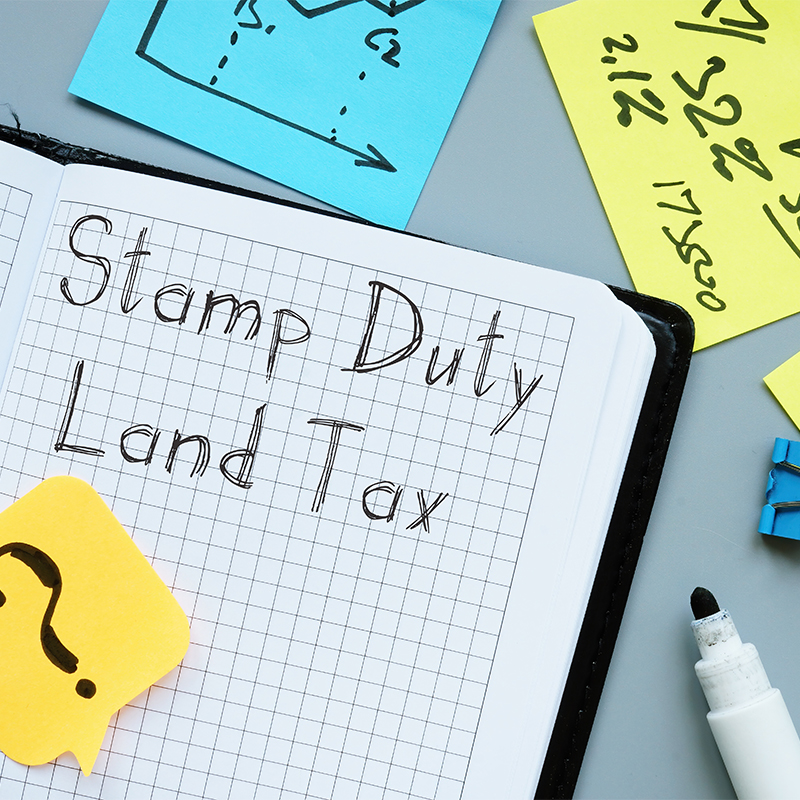Even before the pandemic hit, the conveyancing work on a typical property sale would usually take between two and three months to complete. COVID-related backlogs are frustrating transactions more than normal, and sellers must act proactively to avoid unnecessary delays.
With less than two months remaining before the Stamp Duty Land Tax (SDLT) holiday deadline of March 31st, it is expected that many recently-started transactions will not complete in time.
Although there is the prospect of an extension of the March 31st deadline, or of a more gradual return to standard SDLT rates, nothing is certain.
Whether you are hoping to complete a sale before the deadline or not, there are steps you can take to pre-empt delays and speed up the conveyancing process.
Get the legal process underway ASAP!
Much of the legal process involves gathering information and various other formalities. If these formalities are completed soon after you put your property on the market, it may prevent delays once you have a buyer.
Conveyancing is, in the main, a process of due diligence carried out by a solicitor on a buyer’s behalf. To get the ball rolling, the seller’s solicitor must send a draft contract and supporting information to the buyer’s solicitor. The buyer’s solicitor will review this information, raise enquiries (ask questions) about the property and report back to the buyer.
Although most of the legal work on a property transaction is carried out on the buyer’s side, the conveyancing process cannot commence until the buyer's solicitor receives the draft contract pack.
Chris Salmon of Quittance.co.uk said, “To get your sale off to the best start, the aim should be for your solicitor to send the draft contract pack to the buyer's solicitor a day or so after you accept an offer, rather than weeks later.”
“There is no reason why this cannot be accomplished if all of the preparatory work has been done during the marketing phase.”
Complete the solicitor’s instruction forms
Before your chosen solicitor can formally act for you, several steps must be completed. You will need to accept their conveyancing quote and read, sign, and return their terms and conditions. The solicitor will then need to verify your identity and carry out money laundering checks.
Complete the property forms
With your solicitor instructed, you will need to complete the standard property transaction forms. These forms are detailed questionnaires including the TA6 Property information form, the TA10 Fittings and contents form, and the TA7 Leasehold information form (if you are selling a flat).
These forms are lengthy and there may be a temptation to procrastinate. Some of the questions on the form can be technical or confusing. You must answer the questions honestly, but your solicitor can advise on how best to answer tricky questions.
Resist the temptation to leave the forms on the hall table and fill them in as soon as you can.
Locate documents
Time is often wasted during the conveyancing phase while sellers search for property-related documents. If you carried out any building work or alterations on your home, for example, you should find any planning permissions, building regulation completion certificates, electrical and gas installation certificates, party wall agreements and so on.
If your property was a recent new build, you should find any applicable warranties, such as NHBC certificates.
These documents, along with anything else that might be relevant, should be forwarded to your conveyancing solicitor without delay.
Raise any issues
If you think that there is anything that could negatively impact your sale, such as an unresolved dispute with a neighbour or a missing electrical installation certificate, you should alert your solicitor at the earliest possible stage.
With your solicitor instructed in advance, he will have the benefit of time to work out how best to resolve any issues or present them in the best possible light.
Leasehold properties
If you are selling a flat, your solicitor will also need certain other documents, including a copy of the lease. These documents are often readily available online if you do not have them to hand.
However, the buyer’s solicitor will also need to review the management information pack, containing service charge and ground rent accounts, insurance details, information about planned works and details of any disputes.
Your solicitor will need to get the management information from the managing agent. The time it takes to obtain this information is a common cause of delay. Some managing agents take weeks to turn an information request around. With many agents reporting ongoing COVID backlogs, sourcing the information could take even longer.
If you are selling a flat, it is imperative that the management information is requested as early on as possible. You will normally have to pay between £300 and £500 to the managing agent, but this pales compared to the cost and inconvenience of delays.
Choosing the right buyer
If you are lucky enough to receive multiple offers on your property, choosing the right buyer can have a real impact on how long it takes to exchange.
The highest offer is not always the best offer and there may be other factors to consider. If the prospective buyer is buying without a mortgage, is chain-free, or (better still) both, they should be able to exchange sooner. The longer a transaction takes, the greater the probability of a sale falling through. These factors may trump a higher offer if you are in a hurry or are looking for greater certainty.
Although time is very tight, it may still be possible for a cash buyer to complete the purchase of a freehold property before the deadline, particularly if they opt to forgo local searches and other common sources of delay.
Realistic expectations
Whether you have found a buyer and your transaction is underway or not, timeframes are still very tight. Even if you have followed all the advice set out above, your move may still not complete before March’s Stamp Duty deadline.
Particularly in the present climate, mortgage and search-related delays are common, and a last-minute issue with a missing document could scupper your chance of hitting the deadline. Without an extension, conveyancing solicitors will be exceptionally busy towards the end of March, and logjams are inevitable.
The best course of action at this stage is to keep communicating, to keep chasing for replies and pushing forwards, but above all to be realistic. If your sale does not complete before March 31st, ask yourself, what happens next?
A recent survey revealed that 70% of purchases that are currently underway are not motivated by the stamp duty cut. However, if your buyer is unable to afford the sudden Stamp Duty increase, can you afford to contribute to the total to avoid the sale collapsing? Maybe you could agree on a contingency to split the difference? If you are buying too, you may wish to discuss this same approach with the seller of the property you are purchasing.
Research suggests that in normal times, the longer a sale drags on, the greater the chance that it falls through - plans change, people move jobs - and this is only truer now. Even if an extension is announced, the pressure will only let up slightly. You should keep the momentum going and aim to complete as soon as possible.


 By
By 

 By
By 

Share this with
Email
Facebook
Messenger
Twitter
Pinterest
LinkedIn
Copy this link